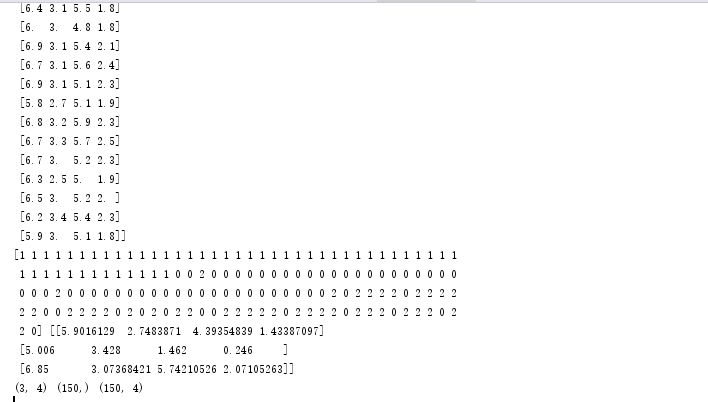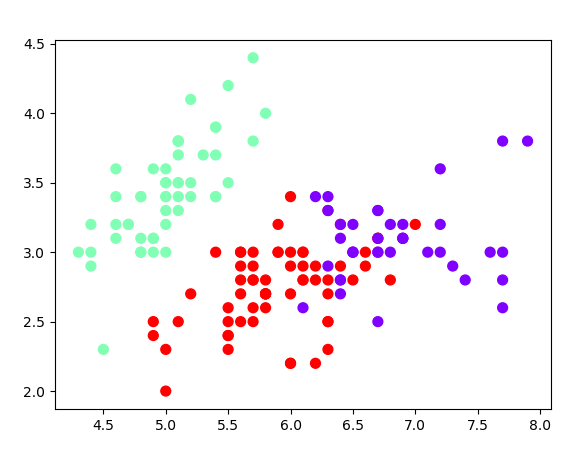作业八
1.用python实现K均值算法

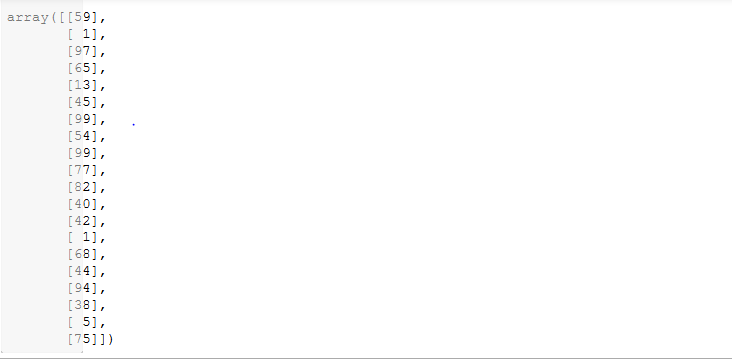






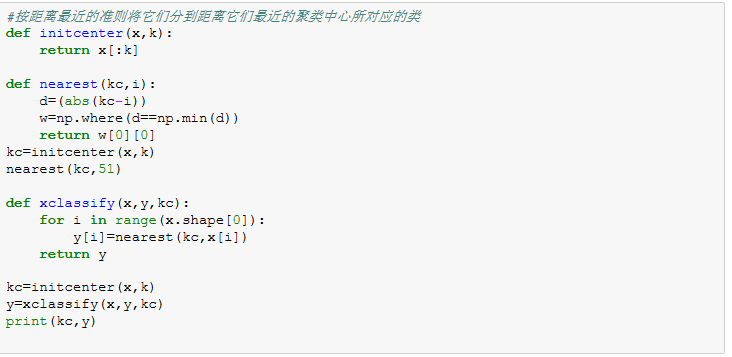




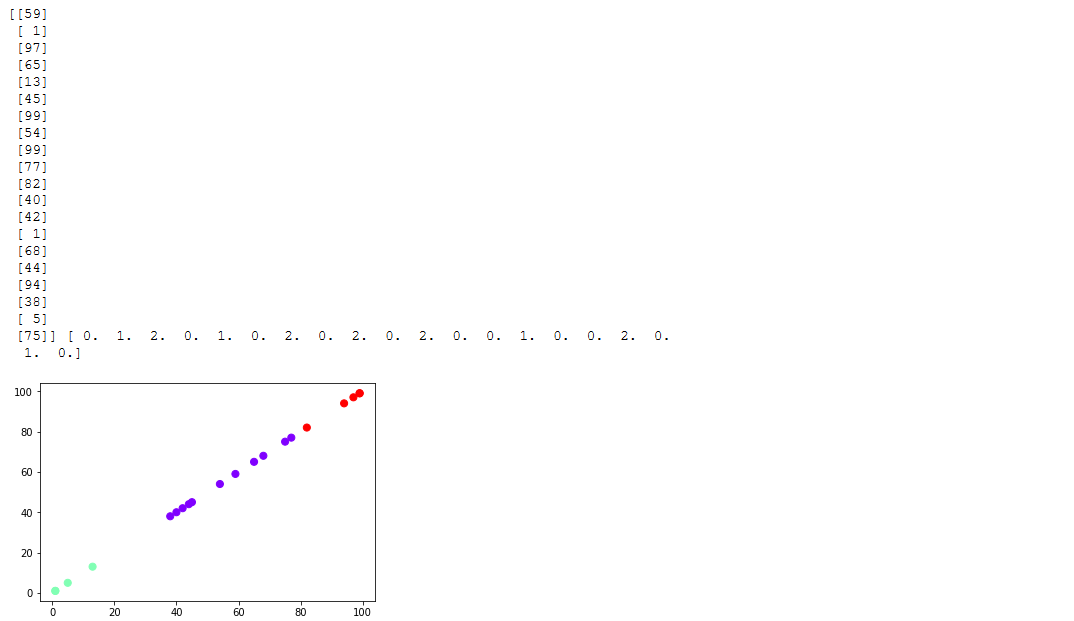
2.鸢尾花花瓣长度数据做聚类并用散点图显示。
import numpy as np from sklearn.datasets import load_iris iris = load_iris() x = iris.data[:, 1] y = np.zeros(150) def initcent(x, k): # 初始聚类中心数组 return x[0:k].reshape(k) def nearest(kc, i): # 数组中的值,与聚类中心最小距离所在类别的索引号 d = (abs(kc - i)) w = np.where(d == np.min(d)) return w[0][0] def kcmean(x, y, kc, k): # 计算各聚类新均值 l = list(kc) flag = False for c in range(k): m = np.where(y == c) n = np.mean(x[m]) if l[c] != n: l[c] = n flag = True # 聚类中心发生变化 return (np.array(l), flag) def xclassify(x, y, kc): for i in range(x.shape[0]): # 对数组的每个值分类 y[i] = nearest(kc, x[i]) return y k = 3 kc = initcent(x, k) flag = True print(x, y, kc, flag) while flag: y = xclassify(x, y, kc) kc, flag = kcmean(x, y, kc, k) print(y, kc, type(kc)) import matplotlib.pyplot as plt plt.scatter(x,x,c=y,s=50,cmap='rainbow',marker='p',alpha=0.5) plt.show()
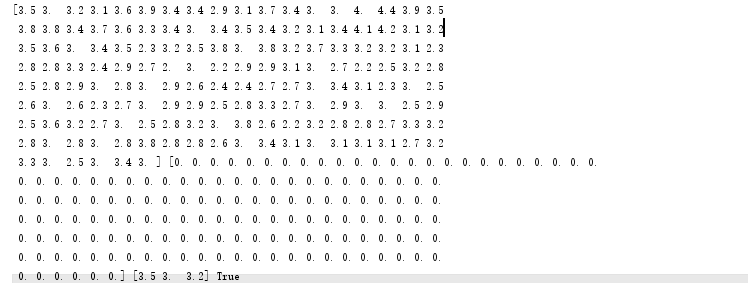
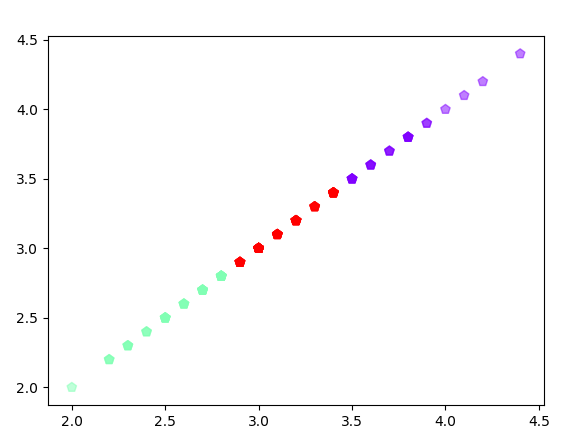
3.用sklearn.cluster.KMeans,鸢尾花花瓣长度数据做聚类并用散点图显示.
import numpy as np from sklearn.cluster import KMeans from sklearn.datasets import load_iris import matplotlib.pyplot as plt iris_data = load_iris() X=iris_data.data # 花瓣长度 petal_length = X[:, 2:3] x= petal_length
print(x) k_means = KMeans(n_clusters=3) est = k_means.fit(x) kc = est.cluster_centers_ y_kmeans = k_means.predict(x) plt.scatter(x,np.linspace(1,150,150),c=y_kmeans,marker='o',cmap='rainbow',linewidths=4) plt.show()

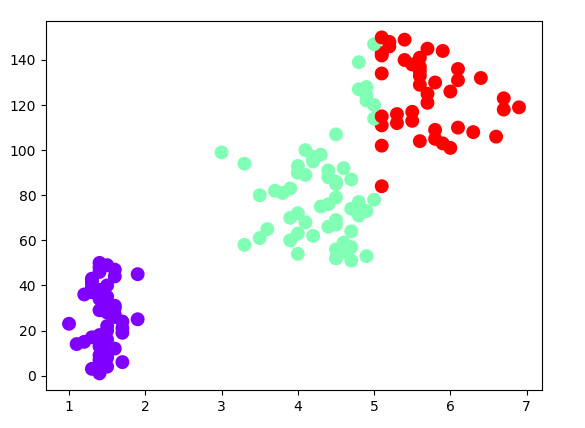
4.鸢尾花完整数据做聚类并用散点图显示.
import numpy as np import matplotlib.pyplot as plt from sklearn.datasets import load_iris iris=load_iris() x=iris.data print(x) from sklearn.cluster import KMeans est=KMeans(n_clusters=3) est.fit(x) kc=est.cluster_centers_ y_kmeans=est.predict(x) print(y_kmeans,kc) print(kc.shape,y_kmeans.shape,x.shape) plt.scatter(x[:,0],x[:,1],c=y_kmeans,s=50,cmap='rainbow') plt.show()

